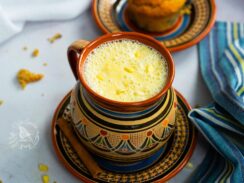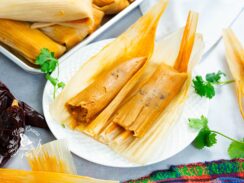Baked Mac and Cheese
Homemade mac and cheese is pure comfort in a dish. Creamy, cheesy, and completely customizable, you can layer your favorite cheeses for extra richness. Easy to make and impossible not to love!
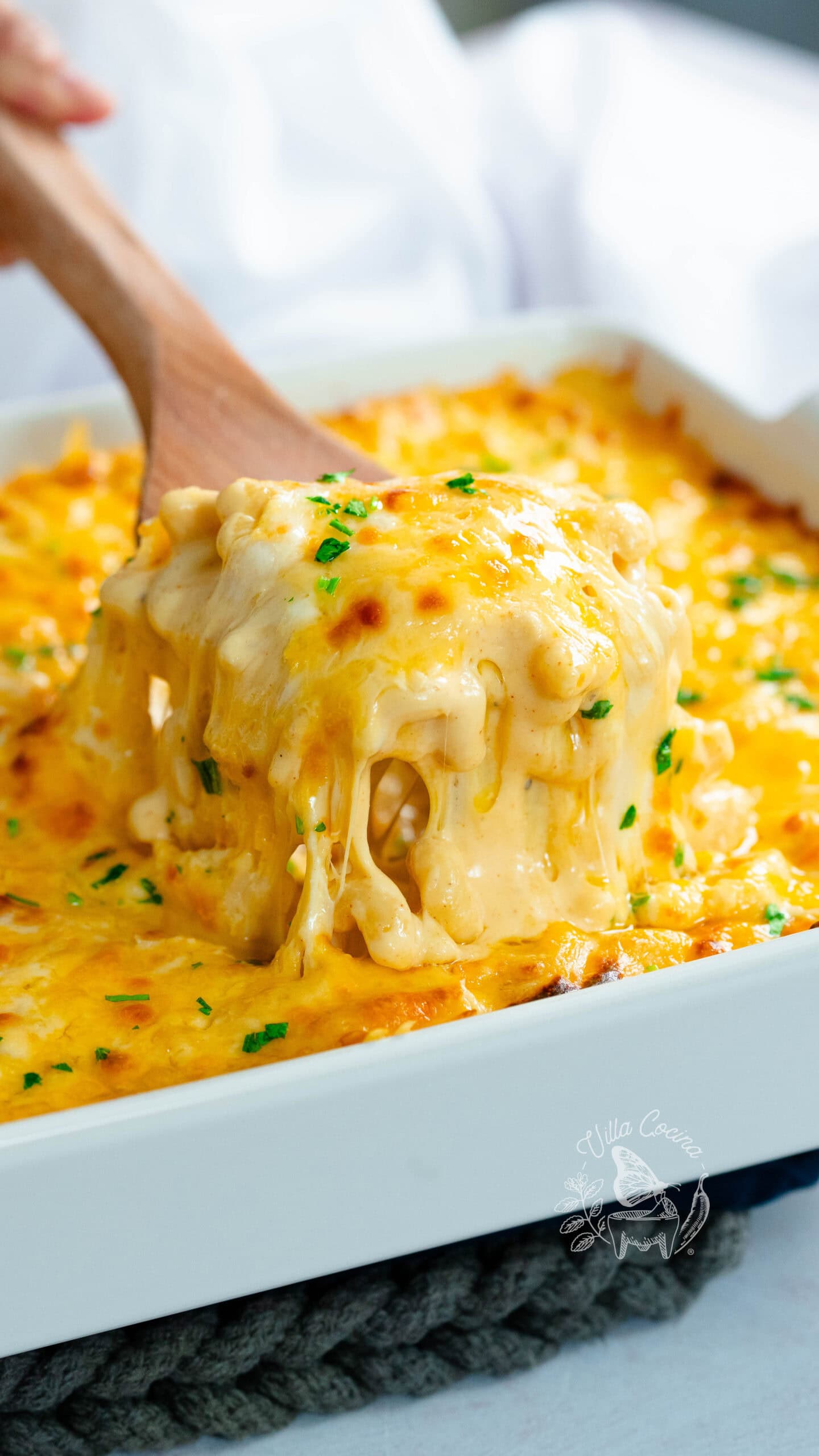
This recipe is simple, yet the results are incredible. Perfectly cooked pasta is coated in a rich cheese sauce thickened with a roux, seasoned just right, and blended with cheeses for a velvety, smooth finish.
As if that wasn’t enough, simple touches like layering cheese in the middle and adding more on top make this mac and cheese extra special. The cheese melts beautifully, the edges bubble, and a quick broil at the end gives it those irresistible golden spots for the perfect finish.
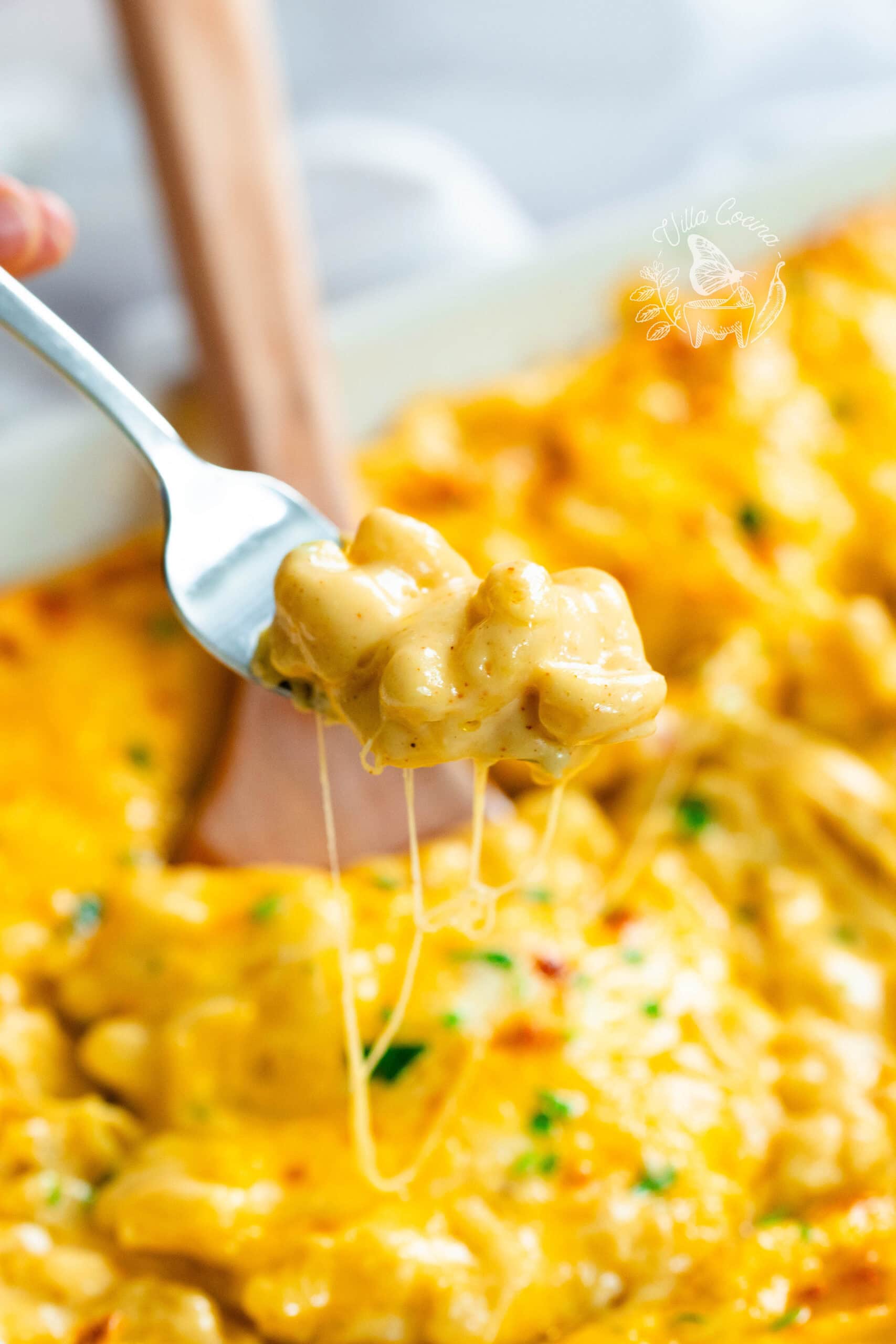
I’ve brought this mac and cheese to Thanksgiving dinners, Christmas, and family cookouts—it’s always one of the most talked-about dishes.
It pairs perfectly with grilled meats, mashed potatoes, frijoles charros for a Mexican touch, or even grilled chicken alongside a fresh salad.
Ingredients
- Elbow Macaroni Pasta – The classic choice for mac and cheese. Its curved shape and hollow center hold the creamy cheese sauce perfectly.
- Cheeses – Cheddar brings sharpness, Gouda adds a nutty creaminess, and mozzarella gives that stringy, melty pull everyone loves.
- Butter and All-Purpose Flour – These form the base of the roux, which thickens the sauce and gives it a silky, rich consistency.
- Evaporated Milk and Heavy Cream – Evaporated milk adds body without thinning the sauce, while heavy cream boosts richness and mouthfeel.
- Seasonings – Add depth, smokiness, and a balanced, savory kick to the cheese sauce.
- Fresh Parsley – Added at the end, parsley brings a fresh, bright note that cuts through the richness.
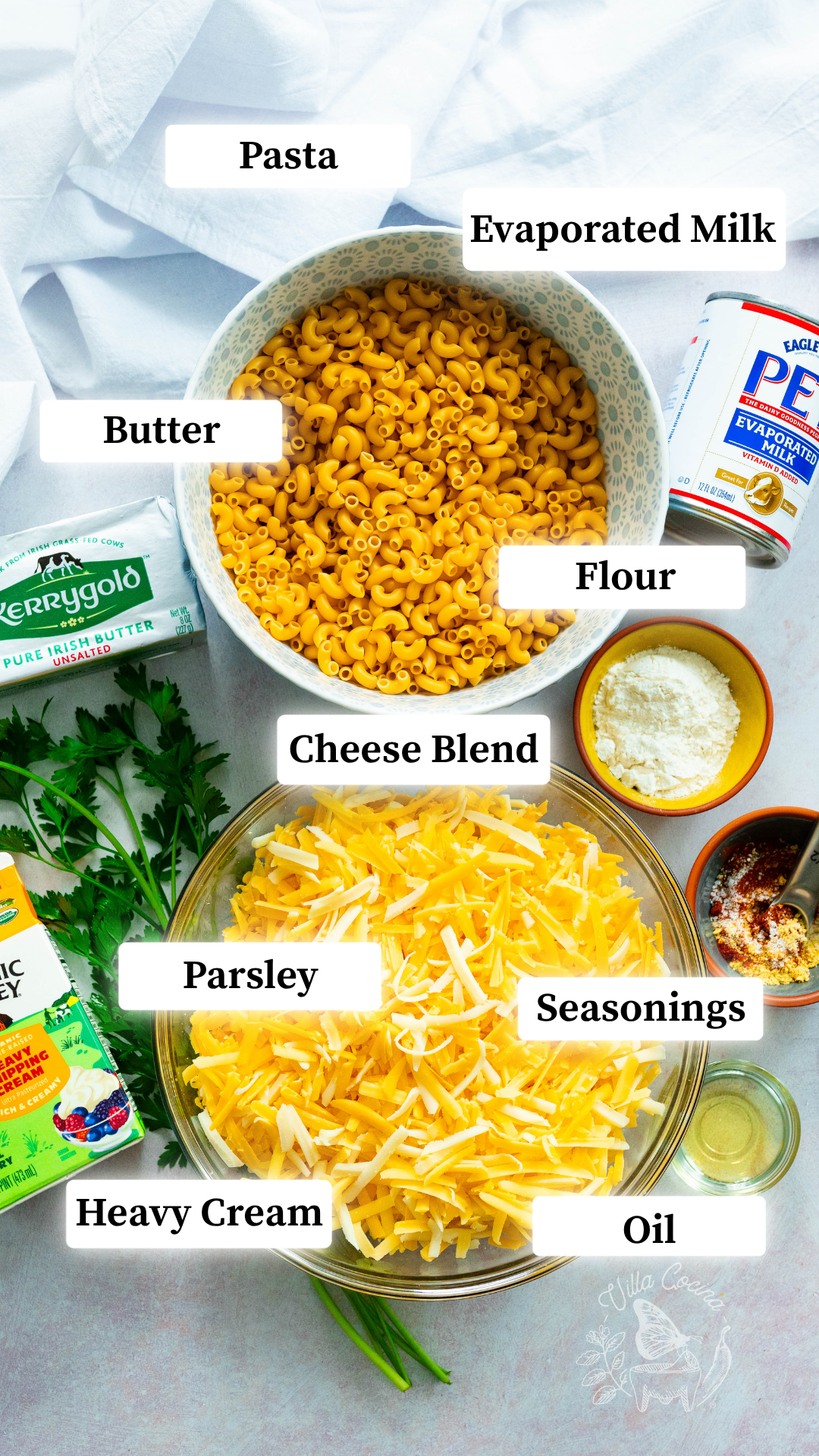
How to Make Baked Mac and Cheese
Grease a 3-quart or 9×13-inch casserole dish with butter and set aside.
Cook the Pasta
Bring a large pot of water to a boil over high heat. Generously salt the water with 1 tablespoon of kosher salt. Add the pasta and stir to prevent sticking. Cook according to package directions until al dente.
Reserve ½ cup of the pasta cooking water. Drain the pasta well, toss it with 1 tablespoon of oil, and spread it in a single layer on a half baking sheet to cool quickly. Set aside.
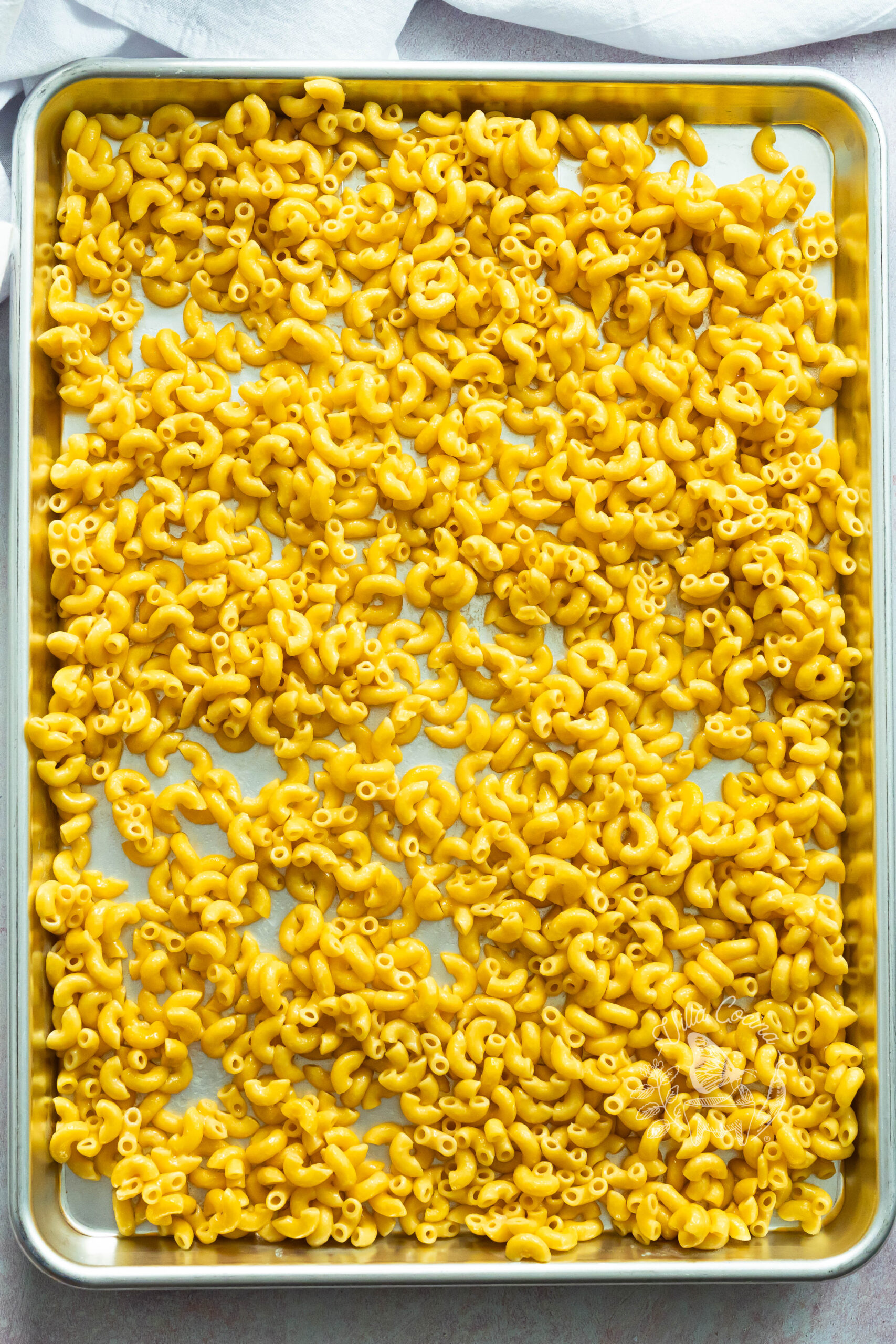
Prepare the Cheese
In a large bowl, toss all the cheeses together until evenly mixed. Divide the mixture evenly into two portions (1.25 pounds each): one for the sauce and one for layering later.
Preheat the oven to 350°F.
Make the Cheese Sauce
In a large dutch oven or pot, melt the butter over medium-low heat. If needed, increase to medium. When the butter begins to foam, whisk in the flour. Cook, whisking constantly, for 1 minute until the roux turns lightly golden.
Slowly pour in the evaporated milk while whisking in a thin, steady stream. Continue whisking until the mixture is smooth.
Add the heavy cream the same way—pouring slowly while whisking continuously to maintain a creamy texture.
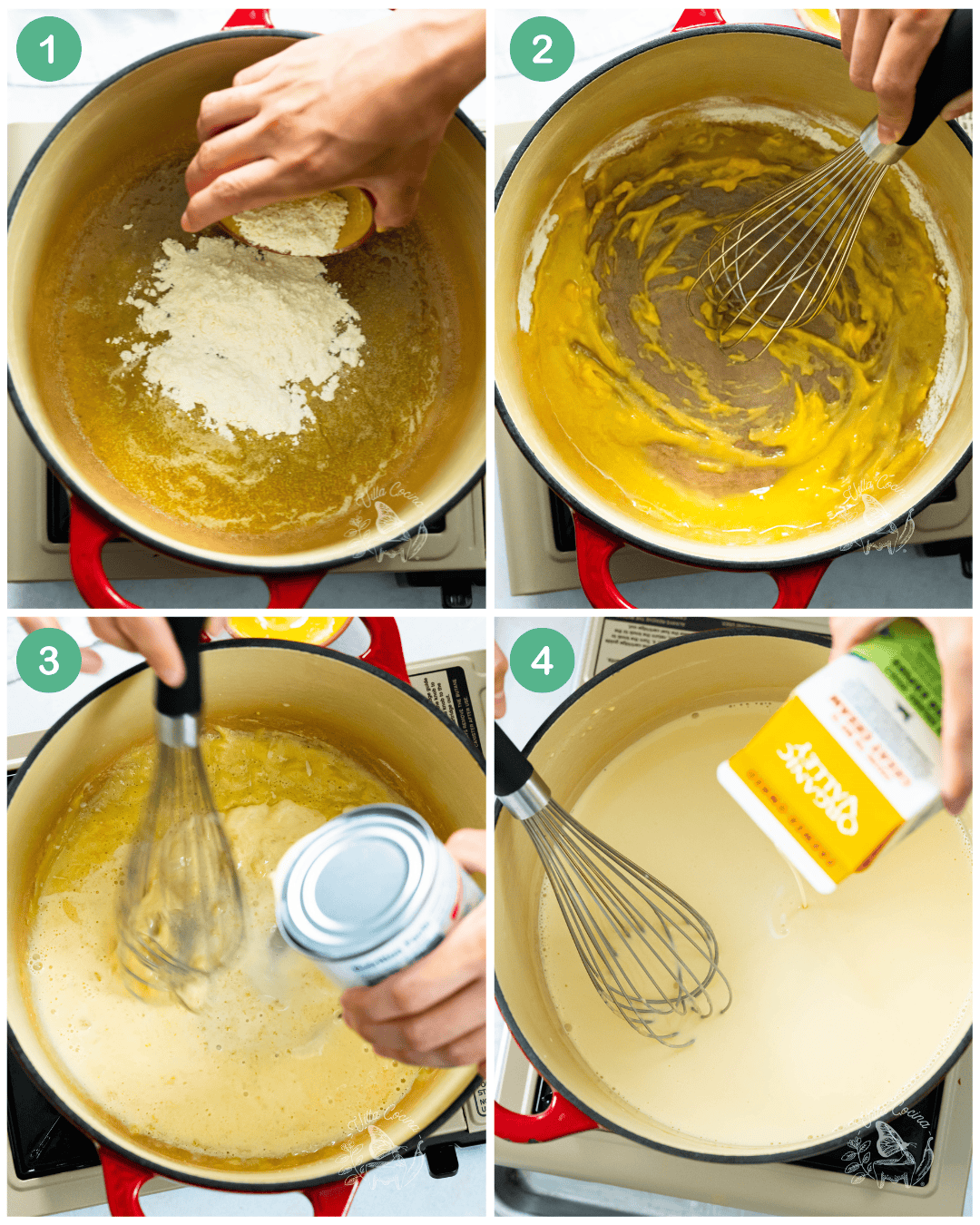
Whisk in the paprika, mustard powder, garlic powder, onion powder, ¼ teaspoon salt, and black pepper. Continue whisking constantly as the sauce comes to a gentle simmer over medium-low heat, then keep whisking for 3–5 minutes, until it thickens to the consistency of light gravy.
Reduce the heat to low. Gradually add the first portion of cheese (1.25 pounds), whisking in small handfuls and allowing each addition to melt completely before adding the next.
The sauce should be smooth and velvety—it should drape, not sit heavy. If the sauce becomes too thick, stir in 1–2 tablespoons of reserved pasta water (keep in mind it’s salted) or heavy cream until it loosens to the desired consistency.
Turn off the heat. Add the cooked pasta and stir gently until every piece is fully coated. Taste and adjust seasoning with salt and pepper as needed.
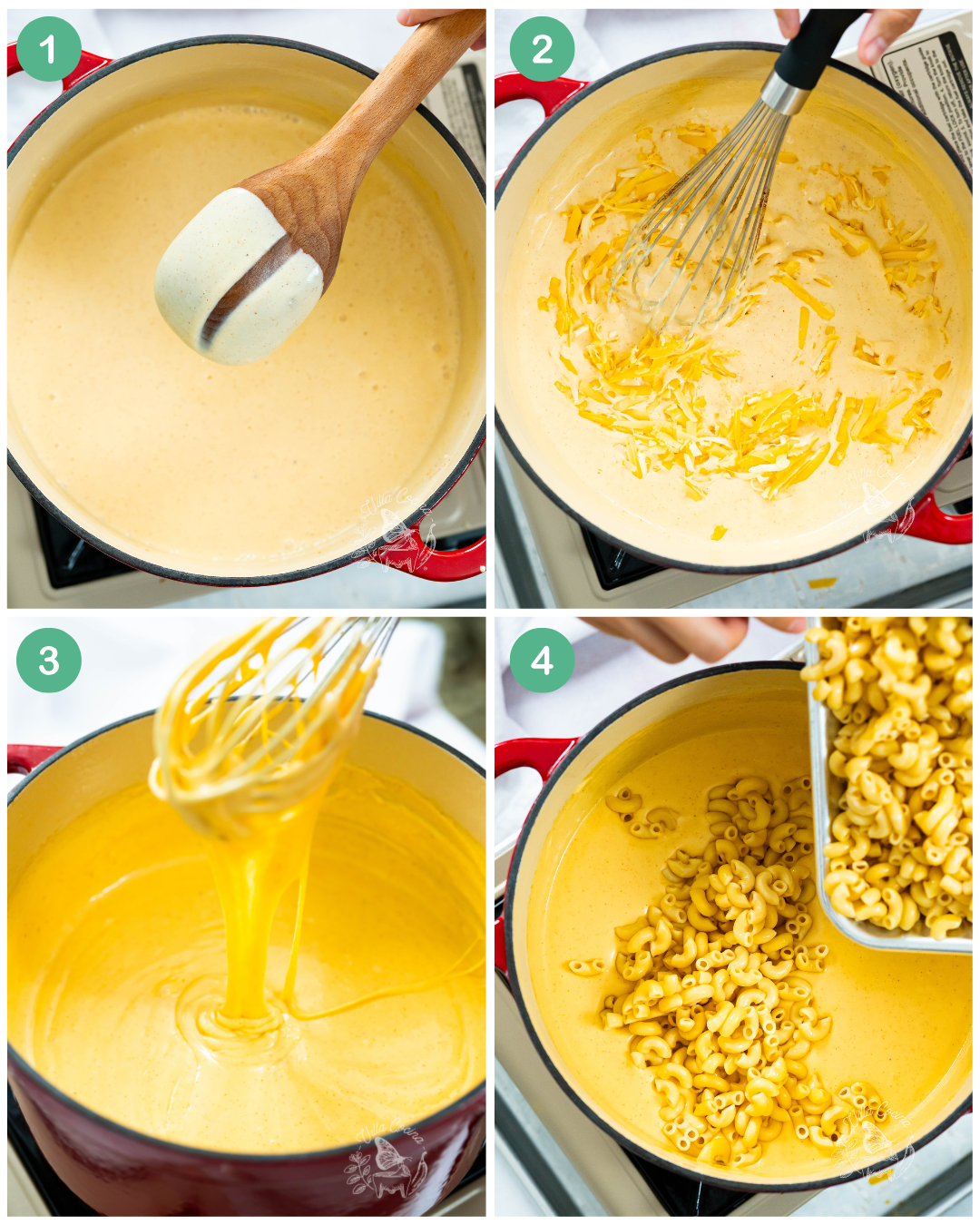
Assemble the Casserole
Spoon half of the mac and cheese into the prepared casserole dish and spread evenly. Sprinkle half of the remaining cheese mixture on top.
Add the rest of the mac and cheese, then finish with the final layer of cheese.
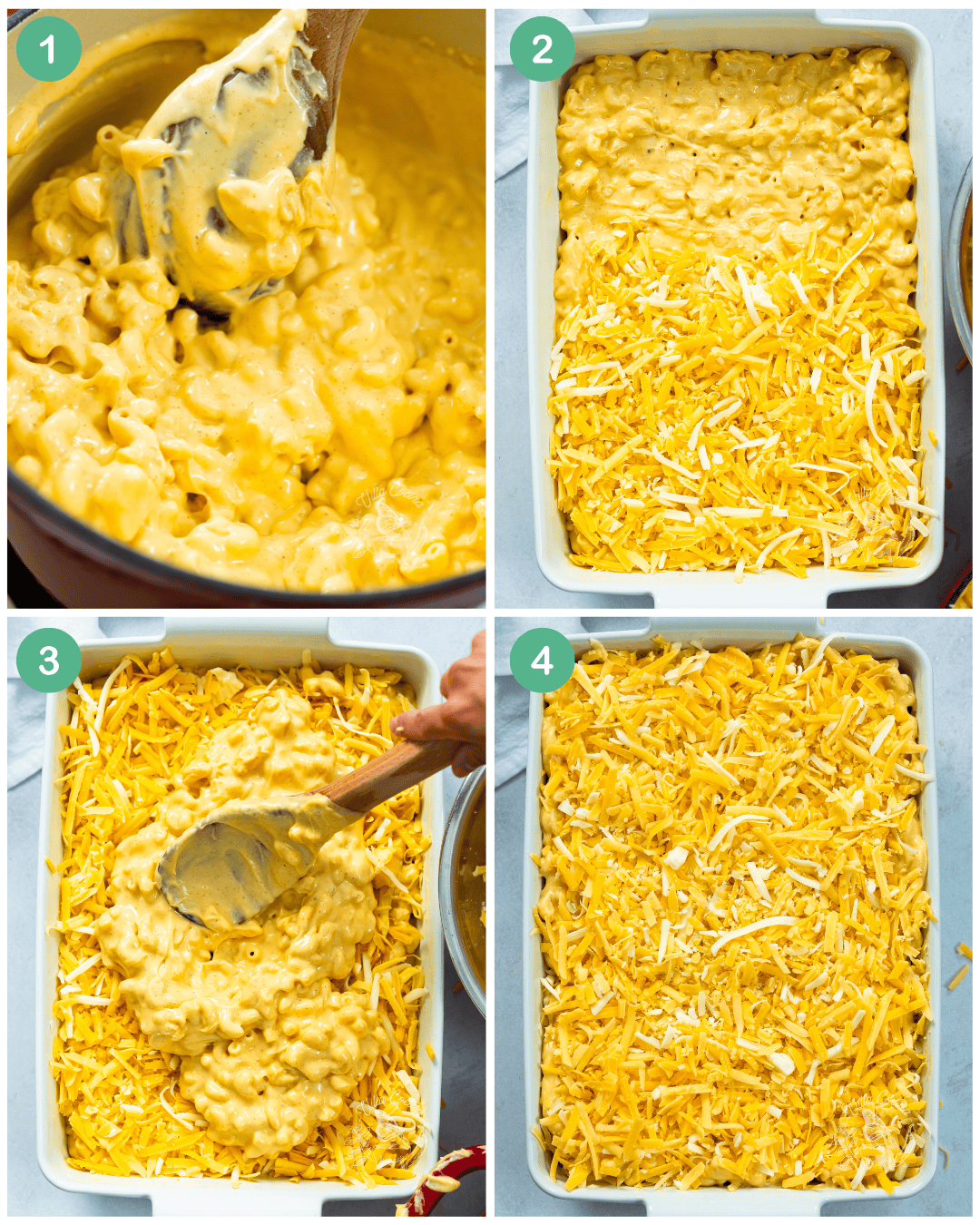
Bake and Serve
Bake uncovered for 15–20 minutes, or until the cheese is melted, the casserole is heated through, and the edges are lightly bubbling.
For a golden-brown top, broil on high for 2–3 minutes, watching closely to avoid over-browning.
Remove from the oven and let it rest for 5 minutes before serving. Garnish with chopped parsley, and serve.
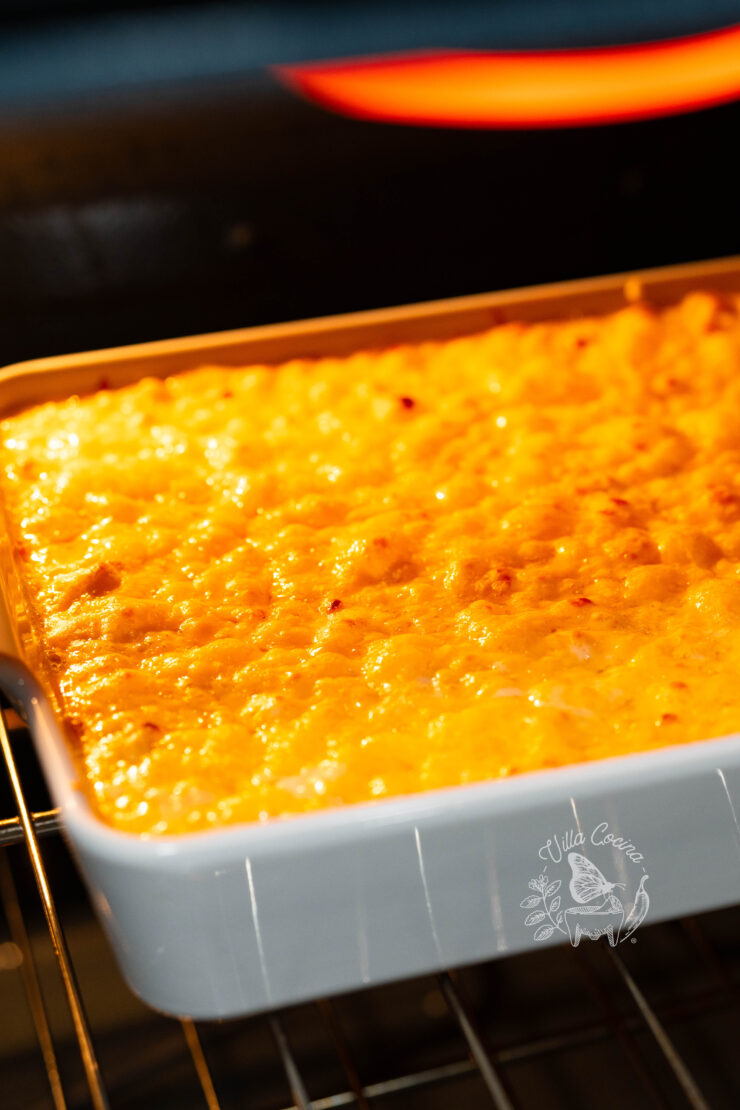
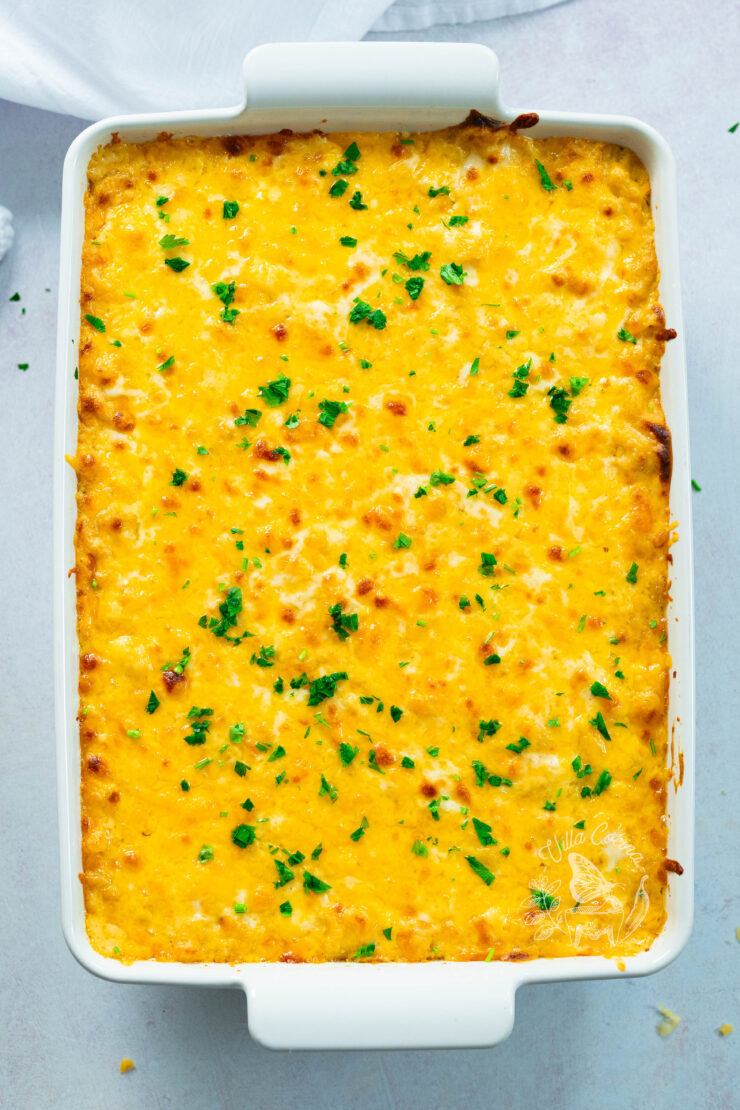
Recipe Video Tutorial
Watch my easy video tutorial for step-by-step visuals on making this Baked Mac and Cheese.
Enjoyed the video? Subscribe and tap the bell for updates on new recipes. Thank you for your support!
Pasta Substitutes
Regular or Chickpea Pasta: Both work! Chickpea pasta adds protein and a slight nuttiness, while classic pasta gives the traditional texture.
Tips
- Grate Cheese Yourself: Freshly grated cheese melts more smoothly than pre-shredded, which often contains anti-caking agents that can affect texture.
- Room-Temperature Ingredients: Using cream, milk, and cheese that aren’t too cold helps the sauce come together smoothly. Leaving the cream out for 15–20 minutes before using helps bring it to a good temperature.
- Whisk Continuously: Especially when adding milk and cream—this keeps the sauce smooth and prevents lumps.
- Cook Pasta Al Dente: Al dente pasta holds up better in the sauce and casserole, preventing mushy mac and cheese. You can tell it’s ready when it’s tender but still slightly firm in the center.
- Optional Flavor Boost: Add a pinch of cayenne or a dash of hot sauce for a subtle kick.
Store
Fridge: Let the baked mac and cheese cool completely, then transfer to an airtight container. Keep in the refrigerator for up to 3–4 days.
To Freeze: Let the baked mac and cheese cool completely, then transfer to a freezer-safe container. Label with the date and freeze for up to 2 months.
To Reheat: Thaw in the refrigerator. Reheat in the oven at 350°F until warmed through, about 20–25 minutes. You can cover with foil to prevent over-browning and remove for the last 5 minutes to crisp the top.
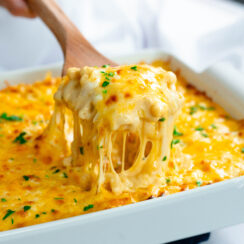
Baked Mac and Cheese
Ingredients
- 1 lb elbow macaroni pasta
Cheese Sauce
- 1 lb medium cheddar cheese, grated
- 1 lb gouda cheese, grated
- 1/2 lb low-moisture mozzarella cheese, grated
- 3 tbsp unsalted butter, plus more for greasing
- 3 tbsp all-purpose flour
- 12 oz evaporated milk
- 2 cups heavy cream, room temperature
- 1 tsp smoked paprika
- 1 tsp mustard powder, or 2 teaspoons Dijon mustard
- 1 tsp garlic powder
- 1 tsp onion powder
- 1/4 tsp kosher salt, plus more to taste
- 1/4 tsp ground black pepper, plus more to taste
Additional
- 1 tbsp avocado oil
- Fresh parsley, chopped
Instructions
- Grease a 3-quart or 9×13-inch casserole dish with butter and set aside.
Cook the Pasta
- Bring a large pot of water to a boil over high heat. Generously salt the water with 1 tablespoon of kosher salt. Add the pasta and stir to prevent sticking. Cook according to package directions until al dente.
- Reserve ½ cup of the pasta cooking water. Drain the pasta well, toss it with 1 tablespoon of oil, and spread it in a single layer on a half baking sheet to cool quickly. Set aside.
Prepare the Cheese
- In a large bowl, toss all the cheeses together until evenly mixed. Divide the mixture evenly into two portions (1.25 pounds each): one for the sauce and one for layering later.
- Preheat the oven to 350°F.
Make the Cheese Sauce
- In a large dutch oven or pot, melt the butter over medium-low heat. If needed, increase to medium. When the butter begins to foam, whisk in the flour. Cook, whisking constantly, for 1 minute until the roux turns lightly golden.
- Slowly pour in the evaporated milk while whisking in a thin, steady stream. Continue whisking until the mixture is smooth.
- Add the heavy cream the same way—pouring slowly while whisking continuously to maintain a creamy texture.
- Whisk in the paprika, mustard powder, garlic powder, onion powder, ¼ teaspoon salt, and black pepper. Continue whisking constantly as the sauce comes to a gentle simmer over medium-low heat, then keep whisking for 3–5 minutes, until it thickens to the consistency of light gravy.
- Reduce the heat to low. Gradually add the first portion of cheese (1.25 pounds), whisking in small handfuls and allowing each addition to melt completely before adding the next.
- The sauce should be smooth and velvety—it should drape, not sit heavy. If the sauce becomes too thick, stir in 1–2 tablespoons of reserved pasta water (keep in mind it’s salted) or heavy cream until it loosens to the desired consistency.
- Turn off the heat. Add the cooked pasta and stir gently until every piece is fully coated. Taste and adjust seasoning with salt and pepper as needed.
Assemble the Casserole
- Spoon half of the mac and cheese into the prepared casserole dish and spread evenly. Sprinkle half of the remaining cheese mixture on top.
- Add the rest of the mac and cheese, then finish with the final layer of cheese.
Bake and Serve
- Bake uncovered for 15–20 minutes, or until the cheese is melted, the casserole is heated through, and the edges are lightly bubbling. For a golden-brown top, broil on high for 2–3 minutes, watching closely to avoid over-browning.
- Remove from the oven and let it rest for 5 minutes before serving. Garnish with chopped parsley, and serve.
Notes
- Grate Cheese Yourself: Freshly grated cheese melts more smoothly than pre-shredded, which often contains anti-caking agents that can affect texture.
- Room-Temperature Ingredients: Using cream, milk, and cheese that aren’t too cold helps the sauce come together smoothly. Leaving the cream out for 15–20 minutes before using helps bring it to a good temperature.
- Whisk Continuously: Especially when adding milk and cream—this keeps the sauce smooth and prevents lumps.
- Cook Pasta Al Dente: Al dente pasta holds up better in the sauce and casserole, preventing mushy mac and cheese. You can tell it’s ready when it’s tender but still slightly firm in the center.
- Optional Flavor Boost: Add a pinch of cayenne or a dash of hot sauce for a subtle kick.
Nutrition
Did you make this recipe?
Show some love! Tag @villacocinaofficial on Instagram and drop a 5-star review. Your support means everything—thanks!
